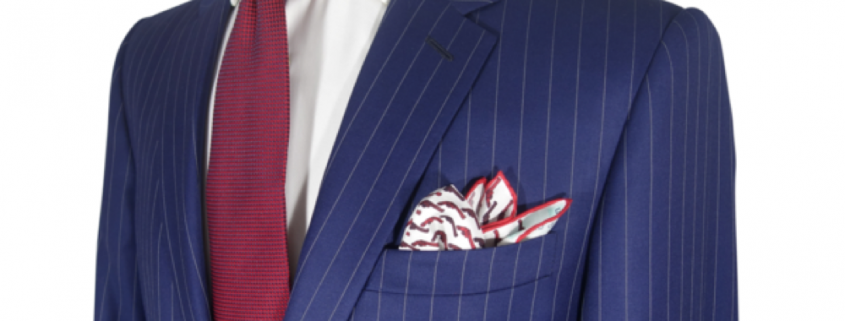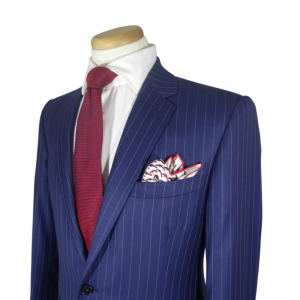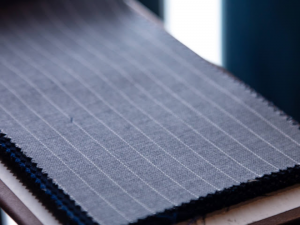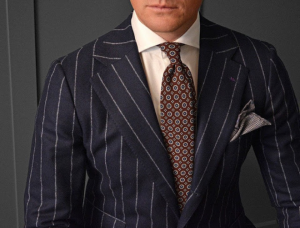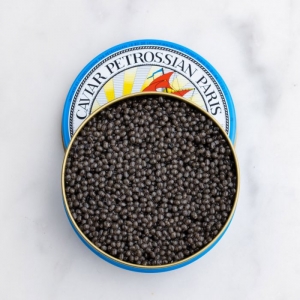
The unique thing about caviar is that it does not need any complicated preparation. Even in the simplest combinations, with basic ingredients, the product is at its best. Therefore I would like to share some caviar facts and recipes with you.
Caviar consists of the unfertilised eggs of the sturgeon. The name "caviar" originates from the Persian خاگآور(Khag-avar). The first caviar eaters were the Persians (Iranians) who believed that caviar would improve their stamina and potency.
Depending on the type of sturgeon whose eggs are, one distinguishes between:
- caviar of sturgeon
- beluga caviar (silvery to black colour and shown here on the right)
- asetrak caviar (black to greenish grey)
- sevruga caviar (dark grey)
- caluga caviar (Siberian huso) from the Siberian River Amur.
- imitation caviar (not from sturgeon and cannot in principle bear the name "caviar")
- Lumpfish caviar (red or black; colour obtained by natural colouring)
- Alaska wild salmon caviar (red in colour)
- Trout caviar (orange in colour)
Below you can find some recipes, because the classic blinis with caviar are just a snack!
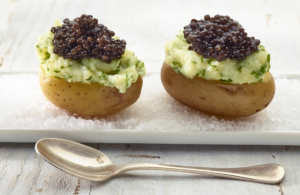
INGREDIENTS for 4 people:
- 500 grams small potatoes
- 1 small box of caviar
- 3 tbsp sour cream
- 1 tbsp chopped chives
- Possibly a few drops of lemon juice
- Pepper
PREPARED:
Put the potatoes, unpeeled, with some olive oil in an oven dish. Put this dish in a preheated oven at 220°C, so that the potatoes 'pop'. Take them out and let them cool down a little. Cut off the top of the potatoes and hollow them out with a small spoon.
With what you take out of the potatoes we make the filling: Mix it with the sour cream, the chives, a few drops of lemon juice and season with some pepper.
Fill the potatoes back up and finish with a spoonful of caviar.
There you go, the simple earthy tuber has had a more than decent upgrade, and is now, quite rightly, an imperial appetiser.
If you prefer a main course, I think of a pasta, which can be made into something very special by using caviar.
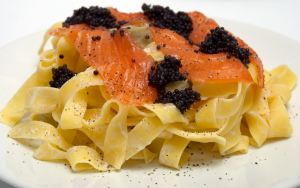
INGREDIENTS:
- 450 gr fresh Linguini or Fettuccini
- 250 ml cream
- 120 to 200 g smoked salmon
- A pinch of nutmeg
- A pinch of black pepper. Or to taste.
- Your pot of caviar, of course!
PREPARATION:
- Cook the pasta in 3 to 4 minutes until al dente.
- In another pan, heat the cream, with nutmeg and black pepper.
- Add the salmon in strips.
- Drain the pasta, mix with the sauce and finish with a few spoonfuls of caviar!
- Buon appetito!
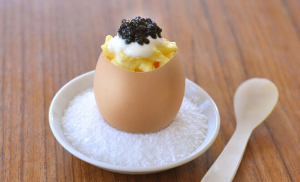
But caviar can also provide a taste sensation at the table for breakfast. How about a divine scrambled egg?
Top your scrambled eggs with some cream, fill the egg shell with it again and finish off with some caviar.
And whether you are going to use real or imitation caviar,.... Let it taste good!
Please note:
- Keep the caviar absolutely cold until the moment of serving.
- Use a mother-of-pearl spoon, or a plastic one, until serving. Metals will oxidise if they come into contact with the caviar, and negatively affect the taste.
Raphaël van den Poel, former fashion consultant of Scapa, Reinhard Frans and Atelier NA tailored suits,
writes our weekly blog on gentleman matters. He writes for MYX Magazine, a Flemish luxury lifestyle platform.
He also has his own blog which you can read here: http://belgiandandy.blogspot.com



